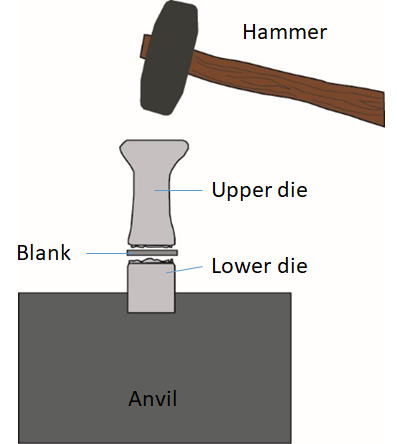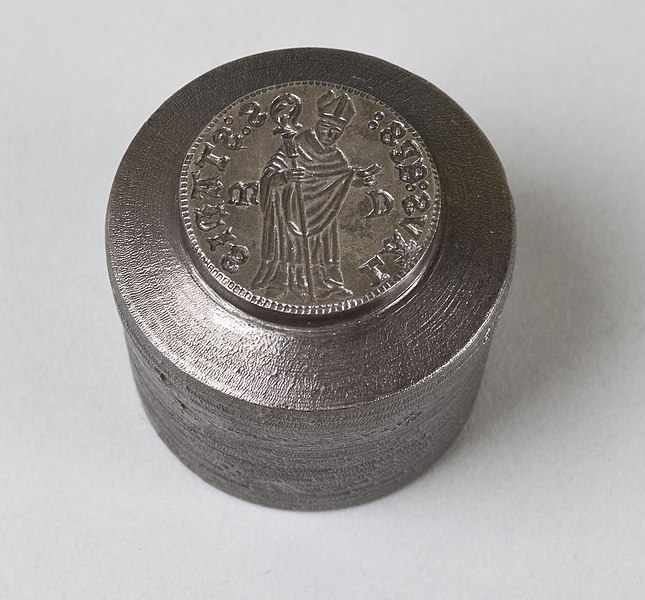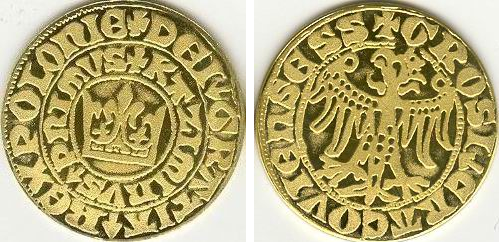Dies and medieval coins
“To make a coin, in medieval mints, metal was first melted and cast into flat bars. Then these bars were hammered into sheets. Their thickness was important. The sheets had to be uniform so that coins would have the same weight. Next, circular disks, called flans, were cut out of the metal sheets and cleaned. At this stage, the stamps or dies came into play. The bottom die was fastened in a block of wood, and a flan was placed on it. The mint worker held the top die in his hand, placed it on the bottom one, with the flan lying in between them, and hit it with a hammer, thus engraving the reliefs on both sides of the coin. Then, the quality of the coins was checked, they were cleaned, and released into circulation.”

“The Portable Antiquities Scheme, The Trustees of the British Museum” CC0 1.0

Medieval Dies,
Muzeum Narodowe w Krakowie: stempel awersu fałszywego dukata, CC0

The Grossus cracoviensis, a silver groschen coin introduced in Cracow by Casimir III of Poland,
CC BY-SA 3.0, Wikimedia Commons, Grosz Krakowski